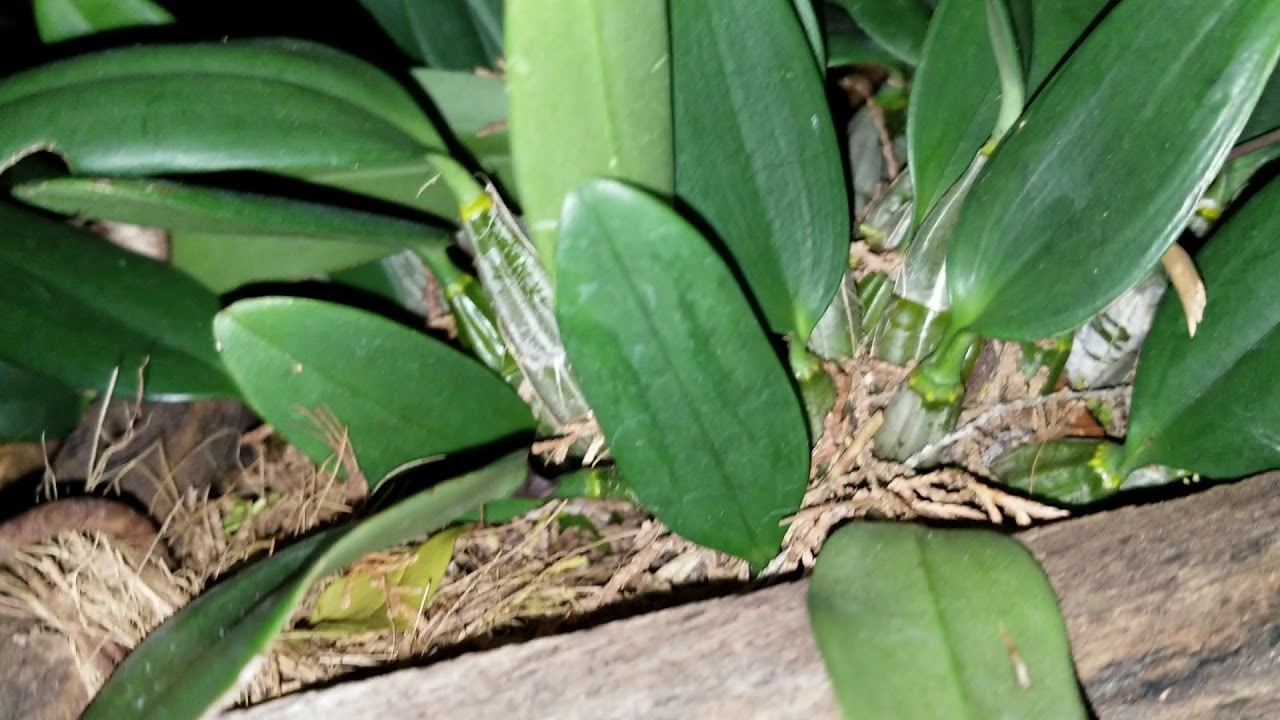Discover the secret to keeping your orchids thriving with vibrant flowers and lush green leathery orchid leaves. Don’t let mottled, discolored or wrinkled orchid leaves or leaves bring down your prized plants. Learn what causes these pesky problems and find out how to fix wrinkled orchid roots and leaves like a pro. Your orchids will thank you with a return of their exotic splendor.
Discover the subtle signals that your precious orchid may be giving you. Watch out for telltale signs like wrinkled leaves, as they could be a sign of distress. Taking the time to carefully inspect your plant will help you avoid problems and keep it thriving. With the right care and attention, you can nurse your wrinkled orchid leaves back to health and restore its beauty for years to come. So don’t wait – learn how to get healthy orchid leaf correct wrinkled leaves today!
Is your orchid looking a little lackluster lately? Maybe its leaves are wrinkled and sad. Don’t worry, there’s hope! Lack of water, too much heat, damaged roots, or not enough nutrients could be to blame. Give your orchid a fresh start by repotting it in a carefully chosen fresh potting mix often, placing it in bright indirect light, and watering it once a week only when the top layer of soil is dry. Before you know it, your wrinkled orchid will be thriving and blooming in no time!
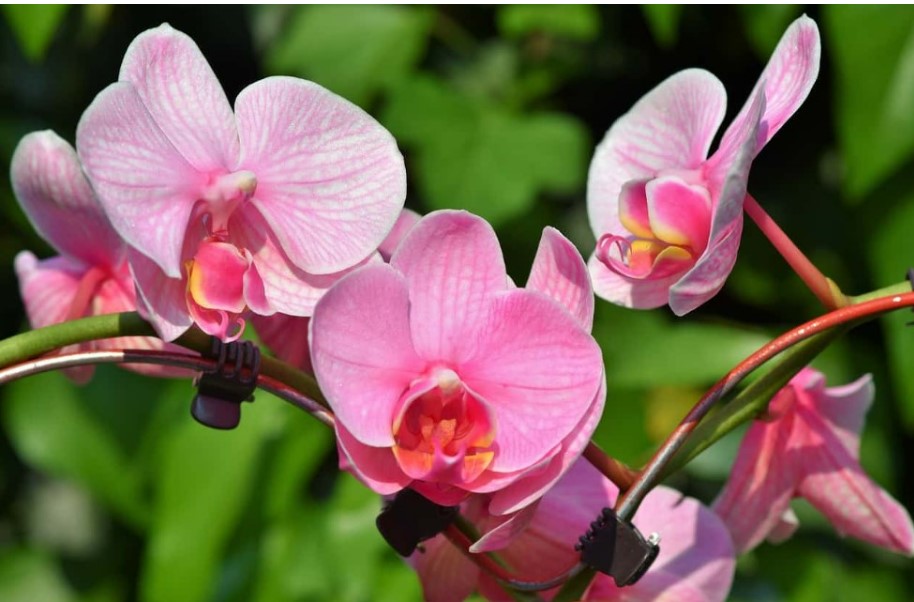
Not wrinkled orchid leaves
Before spotting problematic orchid leaves, it’s essential to know what healthy ones look like. Keep an eye out for vivid, olive-green leaves that stand out from other greenery. Healthy orchid leaves also tend to be thick and bouncy, stretching out from the stem with ease. Strong, brown roots are also a good sign of a flourishing, both healthy orchid leaves and healthy roots themselves.
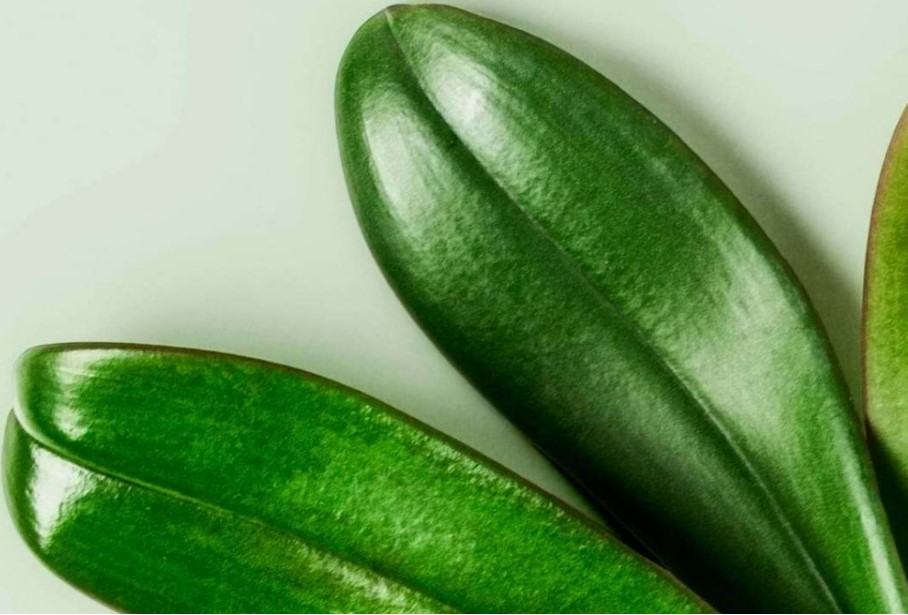
Reasons why orchid leaves might wrinkle
Your orchid plant’s once smooth and vibrant leaves may begin to appear slightly crumpled, and this can be caused by a variety of factors. Neglecting to properly care for your orchid plant or subjecting it to excessive warmth can both result in wrinkled orchid leaves.
Don’t turn your orchids into wrinkly old ladies! Be mindful of overwatering, especially if they’re planted in pots without drainage holes. Indoor orchids are particularly vulnerable to this deadly mistake. Overwatering can hinder orchid’s root system and growth, cause nutrient leaks, and mess with their precious soil’s PH balance. Treat your orchids with love and care by watering them just enough to thrive!
Damaged roots
No matter how diligent you are in watering your plant, it may still wilt or worse – die – if its roots are damaged. Orchids, in particular, are quite sensitive. Even if you think you’re giving them enough water, if their roots are wounded, they’ll start to wrinkle and wither away. So, if you want your orchids to thrive, make sure their roots are healthy and free from any cuts or bruises.
The survival of an orchid is a precarious balance dependent on its delicate root system. The roots act as gatekeepers, allowing vital nutrients and hydration to pass through before reaching the rest of the plant. However, any changes to the growth pattern or transplanting process may unknowingly cause damages to these crucial part water your orchid’s roots and roots themselves. One wrong move and your precious orchid’s roots could be on its last stem.
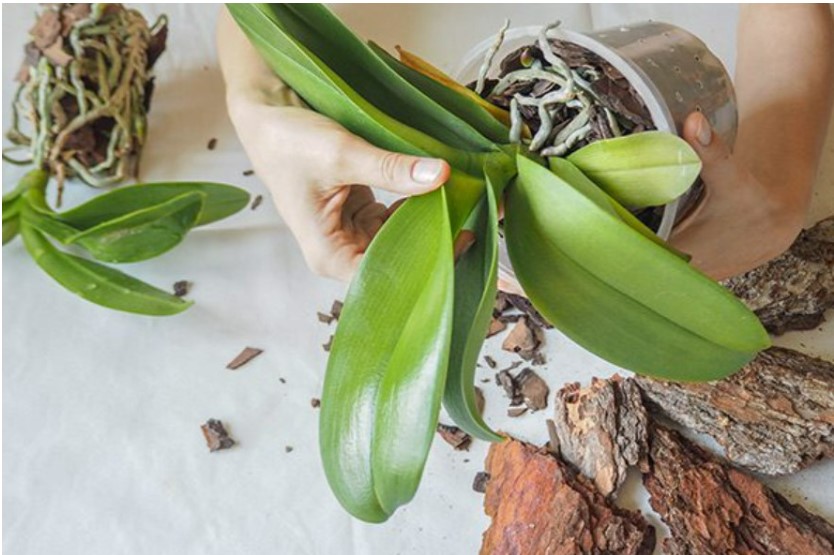
Underwatering
To keep your orchids thriving, it’s important to find the right balance of hydration. While it may be tempting to take other orchids and give them a full soak, be mindful that submerging can harm the roots. Instead, keep a close eye on your plant and look out for any signs of dehydration – like drooping leaves, wrinkled foliage, or yellowing. By staying attentive, you can keep your orchids’ healthy leaves, roots, and happy for years to come.
Detecting dehydration in your orchid can be as easy as reading its leaves. If you notice a lack of vigor and droopiness, it may indicate that your plant is thirsty. Keep a watchful eye on those foliage signals to ensure your orchid stays happy and healthy.
Orchids are delicate and stunning plants, but they can easily become wrinkled and dehydrated if not cared for properly. If you notice your orchid looking a little worse for wear, don’t fret! The solution is simple. Start by giving it a gentle watering, but be careful not to overdo it! While these plants can withstand low levels of water, giving them too much can actually lead to root rot or even death. So, take it slow and steady to bring your wrinkled orchid back to its beautiful, hydrated self.
Too much heat
Orchids are sensitive plants that struggle to survive in temperatures over 75 °F. The intense heat causes them to lose valuable water to their environment, leaving them parched and distressed. In a desperate attempt to hold onto every last drop, the leaves begin to shrivel and sag along the edges. It’s like the plant is in a constant battle with the scorching heat, and unfortunately, it’s a battle most orchids suffer they’re likely to lose.
Plants have a cool trick called transpiration where they release water into the air, like a mini fountain. But they’re careful not to overdo it – they maintain a delicate balance between giving away too much water and not getting enough from the soil. When things get too hot, though, that equilibrium gets thrown off and the plant gets some serious wrinkles. It’s like getting a bad sunburn, but for leaves!
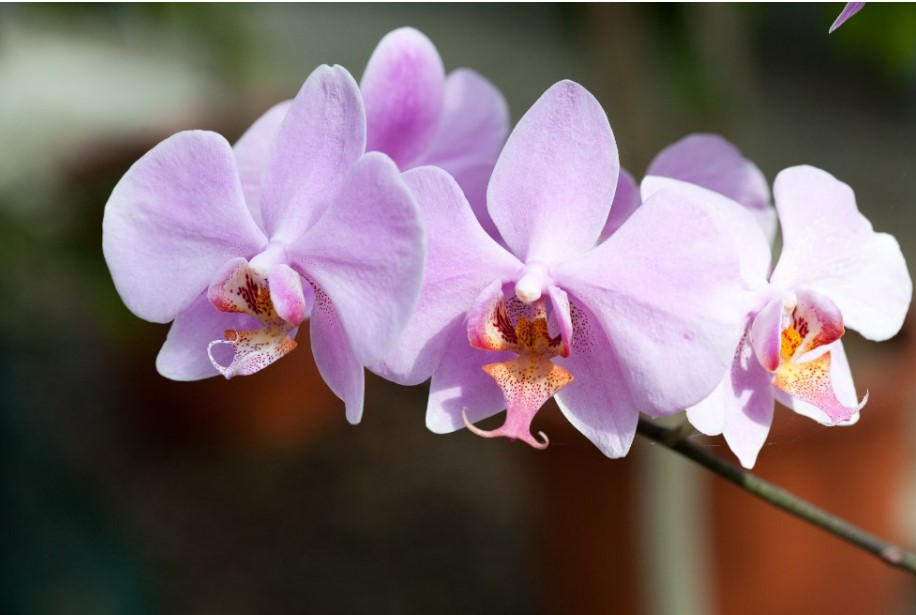
Light under/overexposure
Orchids are delicate, beautiful plants that require just the right amount of sunshine to grow happy and healthy. They prefer to bask in bright, indirect light, rather than being blasted with harsh rays of direct sunlight. In fact, too much direct sunlight can actually be harmful, causing the plant to wilt and lose precious water. And, if that wasn’t enough, too much sun can also bleach the leaves, slowing down the process of photosynthesis and making the plant fragile and weak. For most orchids, a little shade goes a long way in ensuring their vitality and beauty.
If you’re into orchids, you know the struggle of finding the perfect lighting. Trust us, those little flowers can be real divas about it. But fear not, friend! We’ve got the solution for you. You see, while they do need a good dose of sunlight, too much can also be harmful. So if you notice your orchid’s leaves turning yellow and sad, chances are it’s not getting enough light. But don’t worry, all you need to do is find a cozy spot for your plant to bask in some bright, indirect light. We recommend an east-facing window for optimum results. So go ahead and give your orchid the light of its life!
Poor nutrition
Did you know that your plant’s leaves can reveal a lot about its health? If you notice them starting to wrinkle, curl or lose their luster, it could be a sign that they’re not getting the essential nutrients they need. Lack of zinc, potassium, and boron in the soil can be a major factor in stunting plant growth and causing poor leaf quality. These vital nutrients are crucial in keeping your plant’s foliage strong and vibrant, so don’t forget to give them the TLC they deserve!
How to fix wrinkled orchid leaves and more
When it comes to taking care of your orchids, it’s important to identify the cause of any symptoms before administering any remedies. After all, each symptom requires a specialized medical approach. Luckily, if your orchid’s leaves are looking a bit more wrinkled than usual, you can revive them with a few simple tips and tricks. Here’s how to banish those wrinkles and keep your orchid’s wrinkled leaves from flourishing!
Limp leaves
Revive your orchid’s wilted leaves by discovering the hidden culprit behind their wrinkled appearance. The key to saving your plant’s leaves might lie in its roots, which can reveal whether it’s thirsty or drowning. Follow these clues to give your struggling orchid back the hydration it craves and enjoy its lush foliage once again.
Are your plants looking a little worse for wear? It could be due to underwatering, resulting in roots that resemble a raisin more than a healthy anchor for your greenery. But don’t swing to the opposite extreme and drench them in water either, as over-watering can lead to brown, soggy, rotten roots, that are a prime breeding ground for root rot. And root rot, trust us, you don’t want that common orchid fungus to take hold with rotting roots, it’s a real root of all evil.
Despite the potential lack of hydration, the leaves of the plant display strange wrinkles that should not be hastily removed. These unsightly features may actually be playing an important role in the plant’s quest for nourishment and shelter. However, regardless of these efforts, the harsh reality remains: no amount of effort over watering will lead to water reaching the leaves.
Revive your dying plant by giving it some TLC! Trim away any decaying roots with care and precision, using only sterile scissors. Once you’ve cleaned the wounds with a sterilizing solution, give your plant a fresh start by replanting it in new, sterile potting media. Watch as your plant blossoms once again!
Giving your recovering orchid plant the right amount of water and humidity is crucial for healing its roots. Don’t just guess at its needs- make sure to pay attention to what your orchid’s roots really is telling you. And did you know that even the wrinkles on its leaves can absorb humidity? That’s right- give your precious plant a little extra TLC until it’s back to its bouncy, bright self.
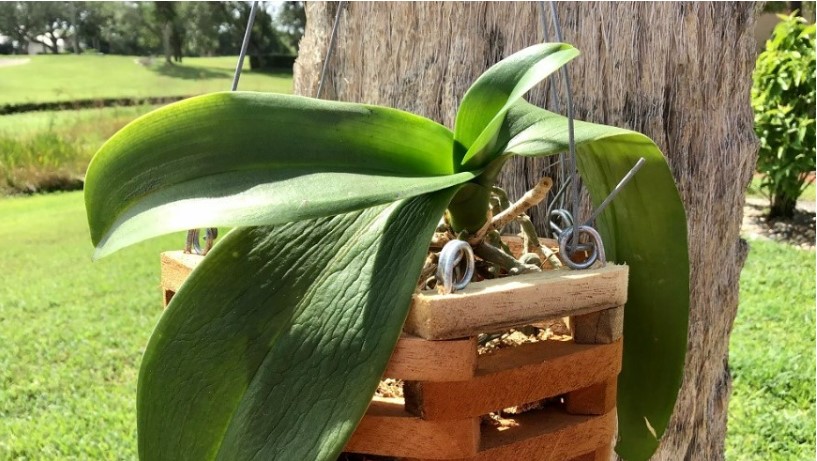
Read also: Orchid leaves wrinkled and limp
Leaves of a leathery orchid
When it comes to your beloved orchids, keep a watchful eye on their leaves! If you notice that they’ve taken on a leathery texture, it could be a sign of a water woe. Perhaps they’re not getting enough H2O, or maybe their root system is in distress and simply can’t take in enough liquid to keep the leaves properly hydrated. Either way, this can result in a dry, unattractive appearance that’s far from desirable. Don’t forget to also inspect the potting material – if it’s falling apart, it could be throwing a wrench in your orchid’s hydration game. Keep those orchid leaves looking lush and luxurious with proper care and attention!
Don’t let your orchid suffer! Whether it’s due to overwatering or a pesky fungal growth or infection, repotting orchid species in fresh soil and trimming away any damaged roots with sterilized tools is the way to go. Keep your green friend thriving with an increased humidity level and tailored watering routine.
Curly leaves
Your precious orchid can suffer a major setback if you choose the wrong potting mix or medium or fail to replace the old, decomposing one. One of the most common signs of trouble is the appearance of curly leaves, which can be distressing for any plant parent. So, make sure you use the right potting mixture and keep an eye on your orchid’s which potting mix or medium feels dry enough to keep it thriving and boasting healthy, uncurled leaves.
Did you know that your orchids might be struggling because they’re stuck in the wrong potting media or type of soil? Ordinary potting media and soil might actually be suffocating their roots and preventing them from thriving. Luckily, there’s a simple solution! By making the switch to a sterile orchid potting or orchid species or medium, you can give your plants the breathing room they need to truly flourish.
When leaves start to curl, you may not realize that tiny pests like aphids or tricky fungi like Fusarium wilt could be to blame. These sneaky critters can lead to dehydration of the leaves, causing them to wilt and droop. Keep a watchful eye on your plants to prevent these pesky problems from taking over.
Say goodbye to pesky aphids and other pests by getting your hands dirty or blasting them with a strong stream of water – no chemicals needed! When it comes to pesky fungi, a sterile removal approach is the way to go. Nip it in the bud by carefully removing any affected parts and repotting in a new and sterile potting mix. Trust us, a little effort now will save you from a whole lot of headache later.
Leaves with brown tips
Is your once-beautiful orchid suddenly sporting brown tips on its leaves? Two possible culprits are overzealous fertilizing and pesky fungi. Don’t let these issues wither your plant – read on for tips on how to restore limp orchid leaves its former glory.
To keep fungal infection and keep dead roots of your plants healthy, it is important to repot them in a sterile potting medium. However, if your plant is suffering from a fungal infection, you may need to take some extra steps and use tools to remove the affected parts before repotting. Don’t let pesky fungi stand in the way of your green thumb!
Can wrinkled orchid leaves recover?
If your beloved orchids have wrinkled leaves, fear not! You have the power to aid healthy orchid leaves in their recovery. The key lies in identifying the root causes of the issue, assessing the level of damage, and providing attentive care during the healing process. One vital step you can take is ensuring that your plants are getting adequate light – moving them to a brighter room can work wonders in restoring the wrinkled leaves” supple texture. Treat your orchids with the care they deserve, and watch them thrive once more.
When caring for your plant, you may encounter the occasional wrinkly leaf. Unfortunately, if the damage is severe, it may not recover and can even harm the surrounding healthy leaves. Don’t fret, though – with continued care, a new leaf can pop up and take its place. Just stay vigilant and tend to your leafy friend with love and patience.
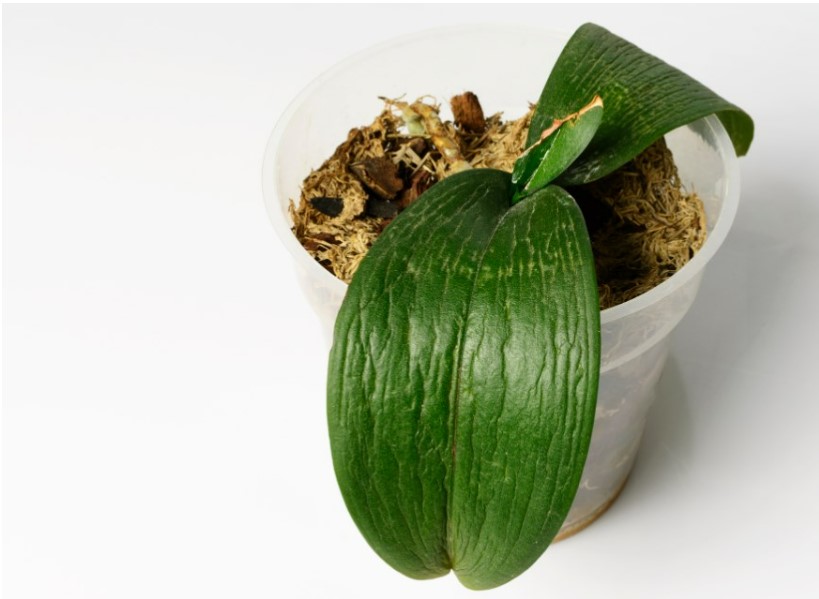
How to prevent orchids from wrinkling and limp leaves
- Is your beloved orchid looking a bit down in the dumps with its wilted and tough leaves? It’s time to give it some extra attention in the hydration department as it seems to be a bit thirsty. Keep an eye on those water levels, and you’ll have a vibrant and lively orchid in no time.
Are your orchids wilting and sad? Fear not, for we have some expert tips that will make your prized flowers bloom like never before! Learn the proper way to water your orchids and watch them thrive with these helpful hints.
- The key to a thriving orchid garden is all in the timing of your watering habits. If you want to keep those beautiful flowers blooming, avoid drenching them in the evening and save it for the morning. Why? Well, watering in the evening can create a breeding ground for nasty bacteria and fungi, which is the last thing you want for your precious plants. Plus, watering in the morning gives your orchids plenty of time to soak up the good stuff and let excess moisture evaporate. So, don’t let your orchids get soggy – stick to a morning routine for the perfect bloom.
- Unlock the magic of your plant’s growth with this simple tip: gently coax the water in your growth pot to flow downward until the holes in the bottom are free and open. Watch as your little green companion thrives and flourishes with its newfound breathing space!
- When it comes to keeping your orchids thriving, temperature is key. If the water temperature dips below 50 °F, your plant may suffer. Ensuring your orchid stays warm and cozy will help it maintain its quality and beauty.
- Orchids may be notoriously finicky, but their beauty is worth the effort. To keep them thriving, don’t drown them with too much water. Instead, stick to a regimen of once a week for indoor plants and three times a week for outdoor orchids. Your patience will pay off when you see these delicate flowers blooming in all their glory.
Is your plant looking a little lackluster? It might be because it’s not getting enough light. When leaves start to turn from green to yellow, it’s a clear sign that you need to move that bad boy to a sunnier spot. Don’t worry, it’s an easy fix – just make sure to keep an eye on your plant and watch those wrinkles disappear!
Bring a splash of vibrant color and life to your east-facing windows with the stunning beauty of orchids. Just be sure to shield them from the scorching sun, as prolonged exposure could lead to unsightly bleaching and a loss of their natural charm.
Imagine a gorgeous orchid with bright green leaves that you’ve been nurturing for weeks, suddenly starting to lose its radiant color. You water it regularly, but little do you know that the plant’s transpiration is leaching out vital nutrients from the soil. This causes the leaf color to change, and the worst part is, your poor, healthy orchid, is becoming malnourished without you realizing it. Don’t let your precious plants suffer- learn how to combat nutrient leaching and keep your orchids thriving!
A solution to wrinkling plants and curled leaves caused by poor nutrition and soil pH involves tweaking the soil’s pH to a balanced 5.5 range. Supplement the affected plant with a 20-20-20 balanced nitrogen fertilizer and dilute it with water for best results. Your plants will thank you for the extra care!
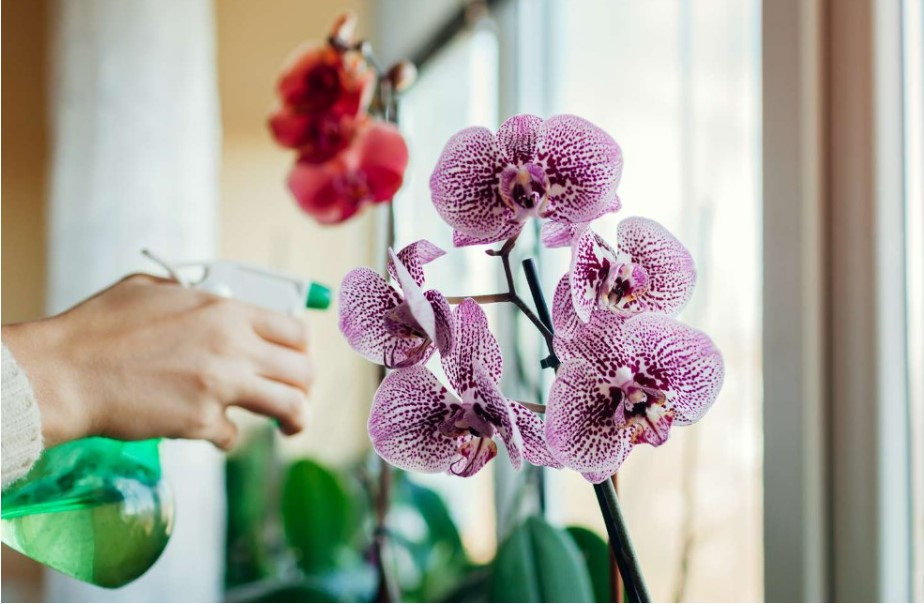
Conclusion
Placing a vibrant and healthy orchid roots in your abode can brighten your mood and make your dwelling more alluring. To ensure smooth sailing, proper hydration, even watering frequency suitable lighting, and top-notch soil are essential to maintaining your priceless plant. Staving off wilted leaves orchid roots is a cinch with proper care and consistent observation.
By ensuring that your orchid has proper drainage, you can prevent the disastrous effects of overwatering. Additionally, regularly providing your plant with small doses of fertilizer can help it thrive by providing those much-needed nutrients. Don’t let your orchid suffer from neglect – take these simple steps to promote its health and beauty.
Read more:
Can leathery orchid leaves recover?
Leathery orchid leaves may not recover fully, but they can still survive and remain healthy. If the leathery leaves are a result of underwatering or low humidity, providing the plant with proper moisture and humidity levels may prevent further damage and help the plant produce healthier leaves in the future.
What do overwatered orchid leaves look like?
Overwatered orchid leaves may appear yellow or brown, and they may feel soft and mushy to the touch.
Why are my orchid leaves getting wrinkly?
Wrinkly orchid leaves are often a sign of dehydration or insufficient watering. This can be caused by underwatering, high temperatures, low humidity, or inadequate air circulation.
Why are my orchid leaves turning yellow and leathery?
Yellow and leathery leaves in orchids can be a sign of overwatering, underwatering, or exposure to excessive sunlight or cold temperatures.
How do you fix leathery orchid leaves?
To fix leathery orchid leaves, you need to address the underlying issue causing them. If the leaves are leathery due to underwatering, increase the frequency of watering. If the issue is overwatering, reduce watering frequency and ensure proper drainage. Adjusting light conditions can also help. In some cases, you may need to trim off damaged leaves.

